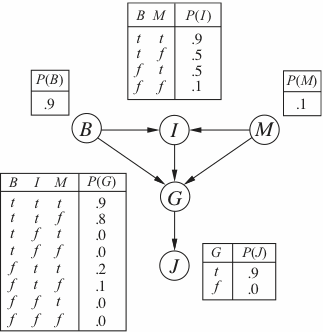CSE473 - Homework 2: Markov Chains and Bayesian Modeling
Due: Friday, June 1, 2012 at 11:59pm. In Dropbox. (If you want to turn in a hard copy, you must do so in class).Problem 1: Markov Chains [20 points]
Consider the following process. You can be lonely or in love. At each time step, you have a 25% chance of finding a sweetheart if you are lonely, but a 2% chance of breaking up if you are in love. Unless otherwise specified, assume that you have a 50% chance of being in love at time 1.A. [5pts] Model this employment process as a Markov chain.
B. [5pts] If you start out in love, what is the probability of still being enamored after three time steps? Show all of your work.
C. [5pts] If you are in love at time 3, what is the probability that you started out in love at time 1?
D. [5pts] What is the stationary distribution of the chain you defined?
Problem 2: Bayesian Modeling [20 points]
Consider the following modeling challenge. You can either study (S) hard in your classes or do a lot of dancing (D). Given these choices, you might graduate (G) with a CSE degree and you might also end up meeting (M) the person of your dreams. All of these possibilities will happen with certain probabilities, that you are welcome to imagine however you like.A. [14pts] Model this problem as a Bayesian network representing a joint distribution over four binary random variables (S, D, G, M). Since there is more than one possible answer, briefly motivate your choices.
B. [6pts] Write three independence (or conditional indpendence) assumptions that your network encodes.
Problem 3: Bayesian Politics [20 points]

Consider the above Bayes net.
The variable are boolean and describe aspects of a court trail. They indicate whether someone broke an election law (B), was indicted (I), whether the prosecutor was politically motivated (M), if the person was found guilty (G), and if they were ultimately put in jail (J).
A. [6pts] Which of the following are true:
- P(B,I,M) = P(B) P(I) P(M)
- P(J|G) = P(J|G,I)
- P(M|G,B,I) = P(M|G,B,I,J)
C. [10pts] Describe the process by which you might sample a joint assignment to the variables of this Bayes net, conditioned on the fact that there was a guilty verdict. You can use any of the techniques we described in class, but you should justify your choice.